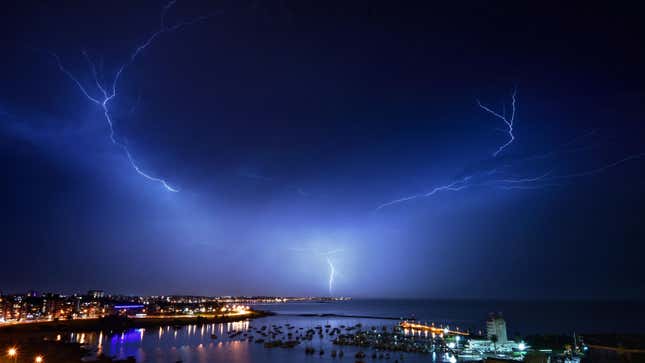
Lighting usually lasts for a couple seconds at most. Except for when it really, super doesn’t. On March 4, 2019, there was a lightning flash in Argentina that lasted for 16.73 seconds.
Again, a lightning flash went on for almost 17 seconds! That’s almost the length of the chorus of “Raspberry Beret!” It’s three times the length of some hardcore songs!
A new report, released by the World Meteorological Organization on Thursday, confirms that the absurd lightning flash was the longest one on record. The previous record-holder was a 7.74-second flash in southern France on August 30, 2012, which the WMO notes is “puny” by comparison but still really freaking long.
The WMO confirmed these records with a new form of satellite technology. Their report also sheds light (sorry) on the record distance a single lightning flash has traveled. The 17-second 2019 flash spanned more than 400 miles. But that’s not even the record-setter; on October 31, 2018, a fitting day for such a spooky occurrence, lightning struck southern Brazil and lit up the sky over a 440-mile-distance from east Argentina to the Atlantic. That’s the same as the distance from Boston to Washington, DC.
“These are extraordinary records from single lightning flash events. Environmental extremes are living measurements of what nature is capable [of], as well as scientific progress in being able to make such assessments,” Randall Cerveny, chief rapporteur of weather and climate extremes for WMO, said in a statement.
Lightning occurs when two electrically charged regions in the atmosphere or ground temporarily equalize. When storm clouds form, they fill with electrical charges. Lighter, positively charged particles form at the top of the cloud. Heavier, negatively charged particles form at the bottom. And when both of those charges get big enough, they make lightning.
Ordinarily, those flashes are just a few miles long. But sometimes, during a particularly massive storm like the ones often seen in South America in the summertime, these sparks reach a “mesoscale,” the WMO says. Then, they form “megaflashes” that reach hundreds of miles in length.
Lightning of all kinds is cool as hell, but it’s also dangerous. In the past two days, over 100 people in India have been struck by lightning and died.
The WMO hopes its new satellite-based method of observing lightning will help detect the next big flashes and also warn people about them so they can stay safe.